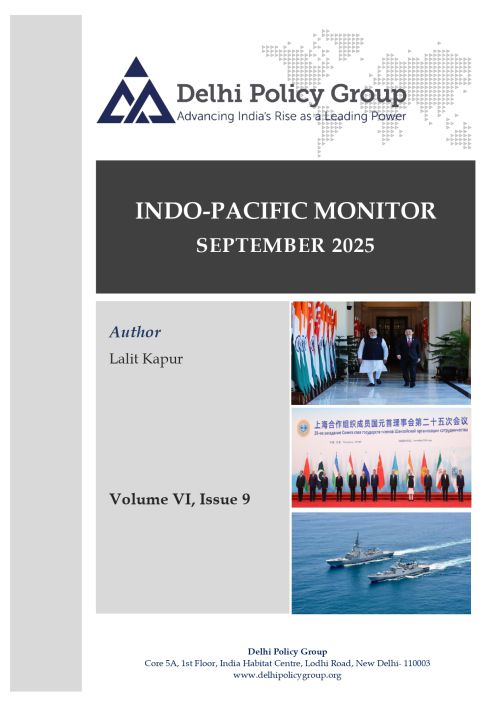Indo-Pacific Monitor
September 2025 was marked by changes of government in Thailand and Nepal. In Thailand, Anutin Charnvirakul was named by parliament as the third prime minister in two years on September 05, following the removal of Paetongtarn Shinawatra from the post. In Nepal, violent protests against a social media ban and public outrage at rampant corruption forced the resignation of Prime Minister KPS Oli and the nomination of former Supreme Court Chief Justice Sushila Karki as the Prime Minister on September 12.
Japan’s Prime Minister Shigeru Ishiba announced on September 08 that he would resign as leader of the ruling LDP and Prime Minister. Elections for the new leader of the LDP will be held on October 04.
Singapore’s Prime Minister Lawrence Wong visited India from September 02-04 and formalised an ambitious roadmap for the bilateral Comprehensive Strategic Partnership. His visit was followed by that of the Prime Minister of Mauritius, Dr. Navin Ramgoolam, who was in India from September 09-16. India announced a special economic package for Mauritius during the visit.
Australia and Papua New Guinea agreed on the text of a mutual defence treaty on September 17. The treaty will be signed on completion of cabinet processes in both countries.
Indonesia and Canada signed a Comprehensive Economic Partnership Agreement on September 24, during the visit of President Prabowo Subianto to Canada. They also signed an MoU on cooperative activities in the field of defence, complementing the previously signed MoU on military cooperation.
Australia and the UAE elevated their relations to a strategic partnership on September 29, during the visit of Australian Prime Minister Anthony Albanese to the UAE. An ambitious free trade agreement between the two countries will come into force on October 01.
The 12th Australia-Japan 2+2 Foreign and Defence Ministerial Meeting was held in Tokyo on September 05. The two countries have stated their intention to elevate their Special Strategic Partnership and redefine the direction of their cooperation for the next 50 years based on shared strategic goals.
The 2025 edition of India’s Technology Perspective Capability Roadmap (TPCR) was unveiled by the Ministry of Defence on September 05. It follows TPCR 2013 and TPCR 2018, and seeks to convey the perspective of India’s Armed Forces on emerging futuristic combat technologies and their capability requirements, enabling industry to step up R&D efforts and build production lines and assemblies to meet these needs.
China designated the disputed Scarborough Shoal as a national nature reserve on September 10, ostensibly to maintain the diversity, stability and sustainability of the ecosystem. The Philippines protested, with the US supporting the Philippine position.
India’s planned Great Nicobar development project was in the news on account of concerns over the island’s vulnerable communities. The project envisages the construction of an international container transshipment terminal, an international airport, two cities and gas and solar based power plants.
India’s Union Cabinet approved on September 24 a package of ₹ 69,725 crores (about $ 7.9 billion) to revitalize India’s shipbuilding and marine ecosystem. The intent, as part of India’s maritime Amrit Kaal vision, is to raise shipbuilding capacity from the present 0.1 million tonnes to 4.5 million tonnes, while creating 250 million tonnes of additional port capacity. Meanwhile, India’s Mazagon Docks Limited began exploring the development of a world-class greenfield shipyard on India’s East Coast.
Australia announced on September 14 the commitment of A$ 12 billion (about USD 7.9 billion) towards upgrading Perth’s Henderson Shipyard to support the nuclear-powered submarine fleet as well as to build surface combatants, including Mogami class frigates. The Pentagon’s policy review, meanwhile, appeared to green light the provision of SSNs to Australia under the AUKUS programme.
The US Navy sought the lease of 25,000 m2 of climate-controlled warehousing facilities in Subic Bay, with operations to begin in September 2026. The development marks a return of the USN to the base after its withdrawal in 1992.
These and other developments are covered in this Indo-Pacific Monitor Vol. VI, Issue 9. To read about them, please see the PDF attached.As always, your comments and feedback are welcome.



